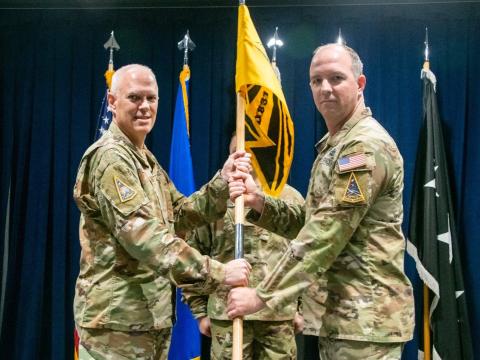DISANet to DODNet: Legacy Network Retires, Welcomes Modernization
The Defense Information Systems Agency (DISA) is making strides as it transitions from its legacy systems to a unified network.
The Department of Defense Network (DODNet) initiative provides better user experience and modernized solutions to its customer base and partner agencies, subject matter experts discussed on the final day of AFCEA International’s TechNet Cyber 2024 in Baltimore.
“This last year has been quite eventful,” shared Johnathon Brett, chief engineer for Defense Enclave Services at Leidos.
The retirement of DISA’s legacy environment, also known as DISANet, and the move to the more advanced DODNet was a “significant activity,” Brett said.
Leidos was awarded an $11 million contract from DISA under the Defense Enclave Services initiative in 2022 and led the DISANet decommissioning effort.
The underlying technology has shifted to a modern environment, Brett stated, explaining the change in management of endpoints and large-scale networks.
“As we improve what we’re doing for our customer base, we’re actually providing more lethality to the warfighter,” said Miguel Cerritos-Aracen, DODNet operations chief, DISA.
Part of the solution is a unified tier-one service desk, he shared. Additionally, the project highlights the “power of DISA,” which leverages its circuits and other organizations to evolve the modernized solutions brought to all customers.
Within the creation and endpoint support, DISA currently offers its 30,000-customer base access to cloud-based services such as impact level (IL)2, IL5 and IL6 regarding Microsoft Office suites. This migration allows participating organizations to focus on their mission, Cerritos-Aracen said, which subsequently improves the entire department.
Ensuring the scalability of the environment is vital, added Charles Buechel III, vice president at Leidos.
As the customer base grows, the expectation for equal or better service during migration remains, he said.
“Part of that is moving into that cloud, setting up a cloud architecture framework, adding some of those automations and innovations,” Buechel stated.
As we improve what we’re doing for our customer base, we’re actually providing more lethality to the warfighter.
A seamless user experience includes predictability, he said.
Technology injection during the migration has been vital, speakers agreed.
Leidos has additionally deployed an efficient and highly scalable virtual desktop capability, Brett added.
“That will allow us to provide a customized experience for the individual DAFAS [defense agencies and field agencies] to have their own networks connected, their own applications deployed, but nonetheless maintain a common architecture," Brett said.
Automation has also been a critical capability, he stated.
“Now that we’ve achieved operational capability for those components, we’re looking forward, moving on to our next release in the near future," Brett said.
TechNet Cyber is an annual event held in Baltimore, Maryland, organized by AFCEA International. SIGNAL Media is the official media of AFCEA.




Comments